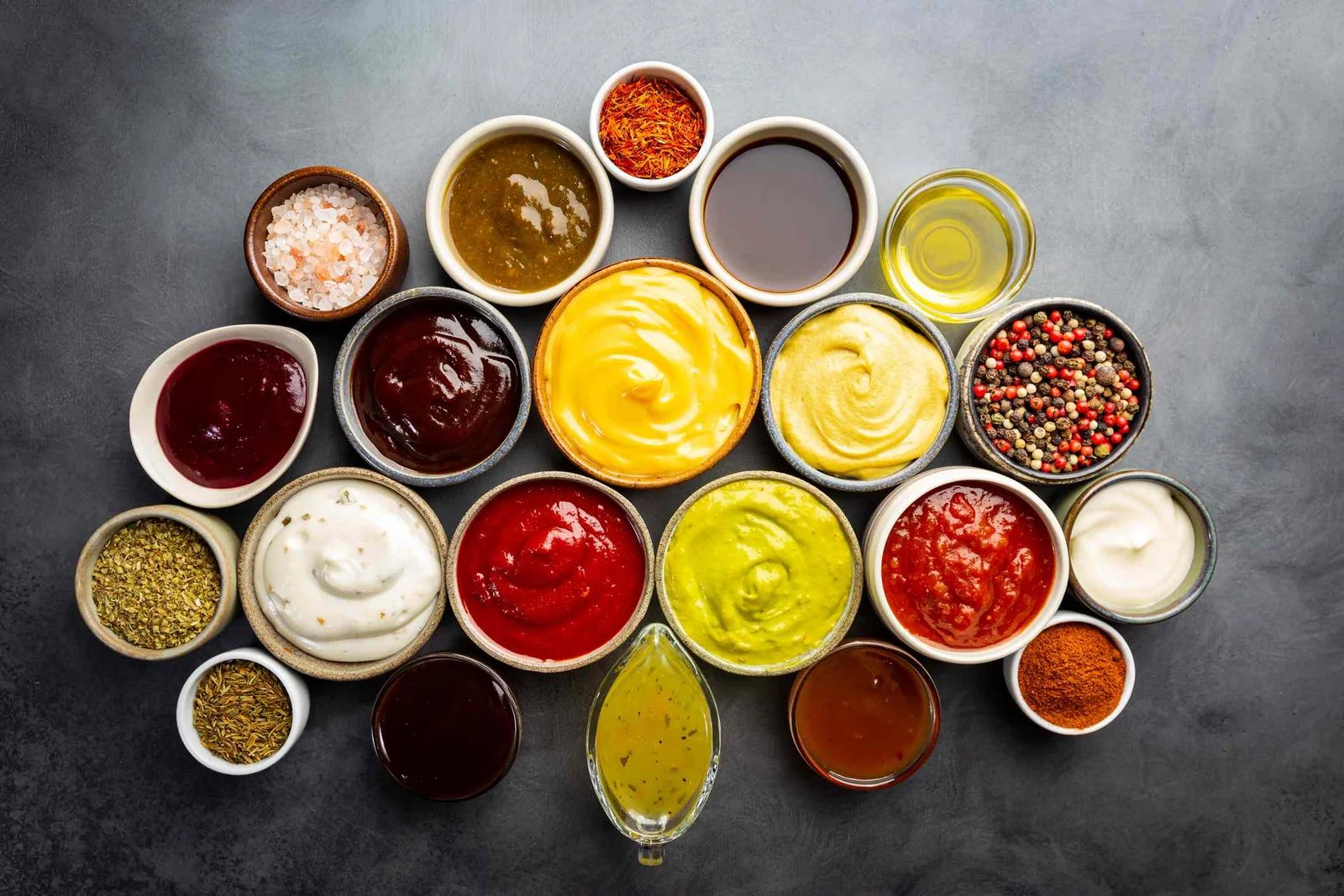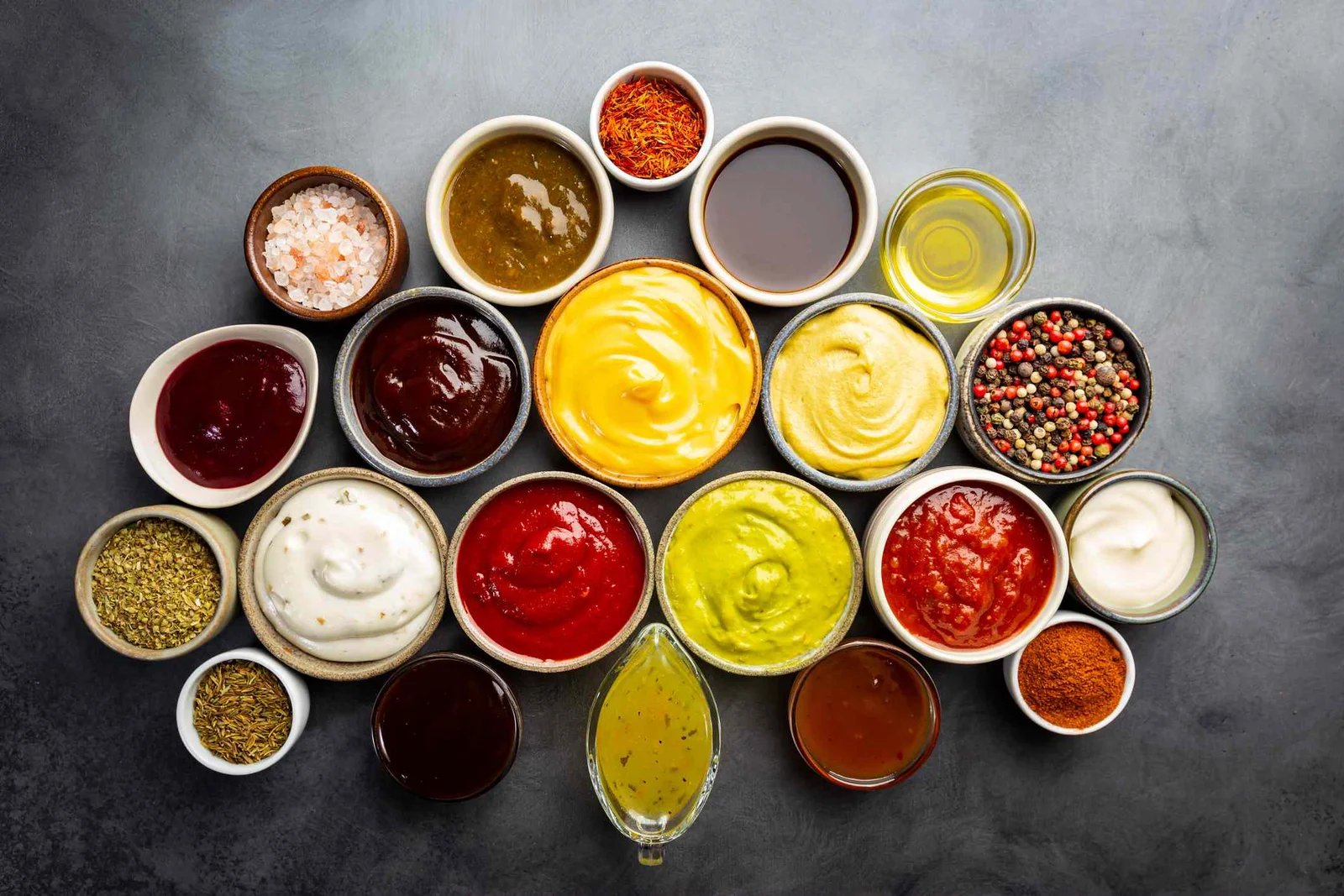
Condiments, like sauces, oils, and spreads, can do more than just elevate the flavor of your favorite foods.
Many also deliver valuable nutrients that support overall health. That said, not all condiments are created equal. Some are loaded with added sugar, salt, and unnecessary additives, while others provide antioxidants, healthy fats, protein, and more.
In this article, we rank the healthiest condiments using criteria like nutrient density and ingredient quality, and offer practical tips to help you choose the best options at the store.
HakanEliacik / Getty Images
Why It’s Healthy: Olive oil is a favorite amongst healthcare providers, and for good reason. It is packed with heart-healthy monounsaturated fats and polyphenol antioxidants. Studies show that eating more olive oil could help protect against heart diseasediabetes, and certain cancers.
Dietitian’s Note: Using olive oil as a replacement for butter or margarine is a smart way to care for your heart, as olive oil can reduce heart disease risk factors such as atherosclerosisthe buildup of plaque in the arteries that drives heart disease, and high blood pressure.
For the tip: Use extra-virgin olive oil as a finishing oil to maximize its antioxidant benefits.
Monica Olteanu / Getty Images
Why It’s Healthy: Hummus is a creamy spread made of chickpeas, tahini, olive oil, and lemon juice. It’s a source of protein and fiber, nutrients that slow digestion and stimulate the release of satiety hormones, helping you feel full after eating. A half-cup of hummus packs 6 grams of protein and just under 5 grams of fiber, making it a good source of both.
Dietitian’s Note: Studies show that snacking on hummus could reduce your appetite, which can help you naturally eat less later in the day. This makes hummus a solid option for people trying to lose weight.
For the tip: Use hummus as a satisfying dip for vegetables or crackers and as a spread on sandwiches instead of mayo or mustard for extra nutrition.
PicturePartners / Getty Images
Why It’s Healthy: Salsa is a condiment made with ingredients like tomatoes, lime juice, chili peppers, onionsgarlic, and cilantro. Not only is salsa low in calories, but it’s high in beneficial nutrients and plant compounds like vitamin C and polyphenol antioxidants.
Dietitian’s Note: Diets high in onions, a main ingredient in salsa, have been linked to a variety of health benefits, from reducing high blood lipid levels to protecting against certain cancers.
For the tip: Salsa can be high in sodium. Fresh or refrigerated salsa typically contains less sodium than shelf-stable salsa and makes a better choice for those watching their salt intake.
Mariha-kitchen / Getty Images
Why It’s Healthy: Avocados are loaded with fiber, healthy fatsmagnesium, folate, and vitamin C, making them one of the healthiest fruits you can eat. Guacamole, which is made with mashed avocadosonion, and lime juice, can be used in place of condiments like mayo to boost the nutrient content of dishes like chicken salad and sandwiches.
Dietitian’s Note: Avocados are one of the best sources of fiber you can eat. A 201-gram avocado packing 13.5 grams or 48% of the fiber Daily Value (DV). Fiber helps you feel full and supports healthy digestion.
For the tip: To keep the salt content of your guacamole low, use herbs and spices like cilantro, chili pepper, or garlic and cumin for a boost of low-sodium flavor.
wilatlak villette / Getty Images
Why It’s Healthy: Greek yogurt is packed with essential nutrients like protein, calcium, vitamin A, and B12. It’s thicker than regular yogurt, which makes it a perfect base for dips, sauces, or dressings. Some types of Greek yogurt are high in probioticswhich can support overall gut health, reduce inflammation, and enhance insulin sensitivity.
Dietitian’s Note: Greek yogurt contains 17 grams of protein in a three-quarter cup serving, which is around twice the protein found in regular yogurt. This makes Greek yogurt a better choice for those who want to increase their protein intake.
For the tip: For the most benefits, look for plain, unsweetened Greek yogurt made with live and active cultures, which indicates that the yogurt is a good source of probiotics.
ollo/Getty Images
Why It’s Healthy: Kimchi is a traditional Korean dish made with fermented vegetables, like cabbage. Fermented foods like kimchi are rich in probiotics, which are key for gut health. Kimchi is also very low in calories, packing only 22.5 calories per cup.
Dietitian’s Note: Studies show that snacking on kimchi may improve symptoms of irritable bowel syndrome (IBS)support weight loss, and enhance metabolic health.
For the tip: Choose raw, unpasteurized kimchi to ensure it contains high levels of live probiotics.
tbralnina / Getty Images
Why It’s Healthy: Nut and seed butter, like peanut butteralmond butter, sunflower seed butter, and tahini, are amongst the healthiest condiments you can eat, as they provide healthy fats, protein, and vitamins and minerals, like magnesium and vitamin E.
Dietitian’s Note: Eating nut and seed butter, which is a source of fiber and protein, could support healthier blood sugar regulation and help you feel fuller after eating.
For the tip: When shopping for nut and seed butters, look for products that are free from added sugar and contain just nuts, seeds, and salt. Limit nut and seed butters made with added sugars when possible.
bhofack2 / Getty Images
Why It’s Healthy: Tomato products, like marinara sauce, are the main dietary source of lycopene, a carotenoid plant pigment that has anti-inflammatory and heart-protective properties. In fact, a 2019 review of 28 studies reported that people with higher tomato intake and greater blood concentrations of lycopene had a 14% lower risk of developing heart disease.
Dietitian’s Note: In addition to lycopene, marinara provides vitamin C, potassium, and vitamin A, making it an overall healthy condiment choice.
For the tip: Marinara sauce can be high in salt, so it’s best to choose low-sodium marinara when possible.
When shopping for condiments, there are a few ways to make sure you’re stocking your cart with the healthiest products:
- When possible, choose condiments low in added sugar, salt, and unnecessary ingredients like artificial sweeteners and colorings
- Opt for minimally processed condiments made with whole, nutritious ingredients, like the ones listed above
- Choose fermented foods with live and active cultures or those that are unpasteurized for the most probiotic benefits.
- Buy condiments in glass jars or BPA-free packaging when available
- Pick condiments that contain healthy fats, like olive oil, nuts and seeds, and avocados
Condiments can elevate both the flavor and the nutrition of your meals and snacks.
Some of the healthiest condiments you can buy are olive oil, hummus, salsa, guacamole, Greek yogurt, kimchi, nut and seed butter, and marinara.
Try including some of these condiments in your diet for a delicious way to improve your nutrient intake.
Disclaimer: This news article has been republished exactly as it appeared on its original source, without any modification.
We do not take any responsibility for its content, which remains solely the responsibility of the original publisher.
Author: Jillian Kubala, RD
Published on: 2025-10-15 21:30:00
Source: www.health.com
Disclaimer: This news article has been republished exactly as it appeared on its original source, without any modification.
We do not take any responsibility for its content, which remains solely the responsibility of the original publisher.
Author: uaetodaynews
Published on: 2025-10-15 18:54:00
Source: uaetodaynews.com
